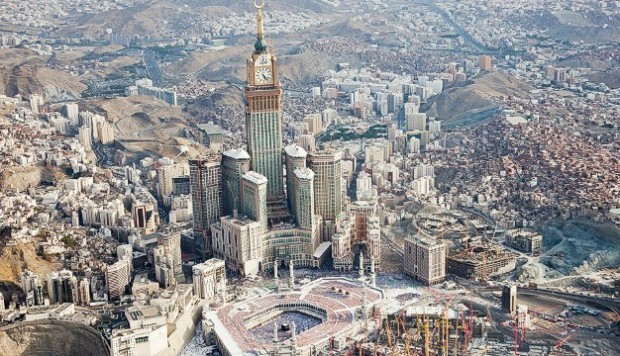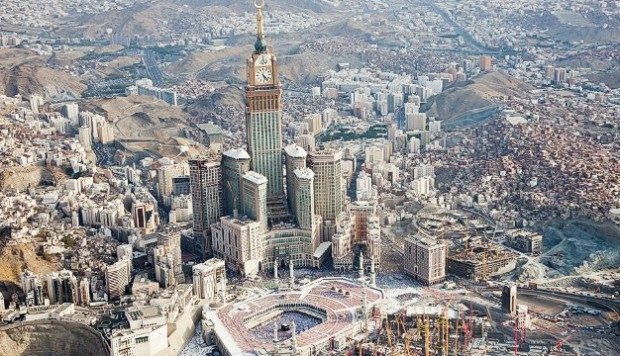This is Abraj Al Bait Towers in Mecca. It has everything you could possibly want from a luxury development – heliports, huge shopping mall, five-star hotel, and a prayer room that can accommodate 10,000 people.
It has the biggest clock ever made, its four faces 46 metres across – see those gold pillars either side of the clock face? Each one of them is taller than the Westminster clock tower. The building overlooks the Grand Mosque and when the call to prayer is sounded from the main spire, it can be heard seven kilometres away.
At a cost of £9 billion, it has the honour of the being the world’s most expensive building.
This is what the proposed new nuclear power station at Hinkley Point would look like:
For the cost of this power station you could build Mecca’s clock tower twice over, and then host the 2012 Olympics again with the change.
At £24.5 billion it will take the record for the most expensive building in the world by a country mile, and that’s the minimum price tag if all goes well. EDF admit the final tally could be as high as £34 billion if there are complications. Not that the costs stop when construction finishes and it’s switched on – the government has pledged a minimum price of £89.50 for 35 years, a subsidy that will amount to around £1 billion a year.
It’s a deal so terrible that even those who have been campaigning for new nuclear power stations don’t want it. When campaigners have asked to see the energy modelling the government have used to base their decisions on, they’ve been told it’s secret and Freedom of Information requests have been denied.
Yesterday the government renewed their commitment to Hinkley Point C and announced further guarantees in order to entice China to invest.
This is the same government that has been systematically dismantling renewable energy subsidies in order to secure “lower bills for hardworking British bill payers”.
Does not compute.



Still cheap per KWh than the Swansea tidal lagoon. And you like that.
That’s a world first. It’s pioneering something completely new and you’d expect it to be expensive. If it works, the second and third lagoon power stations will be much cheaper.
This is the opposite. It’s a vast price for a technology that nuclear advocates say is already outdated. The future of nuclear, as the Breakthrough Institute will tell you, is in smaller, modular plants. Much more cost-effective. If we were spending the same money to trial that idea, I’d support it.
I like the modular idea. Sadly a Trident sub PWR power pack in every town isn’t on the agenda. Principally due to the people who shout about precautionary principles and fracking.
Since this is currently the only nuclear game in town and we need the baseload it gets my vote. Best of the limited options available. I wouldn’t want to be an environmentalist if the lights go out.
Yes, the shouting makes it hard to have an intelligent conversation about nuclear power. That’s one of the many areas where the environmental movement is really unhelpful.
I’m not convinced this is the only game in town, but even if it is, this is still a terrible deal. The same reactor is being built in Finland and France at the moment and is performing abysmally at keeping to budget and timetable. Both governments have agreed minimum prices far below what we’ve offered. And why does nuclear power get a guaranteed subsidy for 35 years, when the solar industry got just 5 years out of the feed-in tariff before the government starting looking for excuses to pull the plug?
If we’re going to be talking these sorts of sums of money, let’s use it to really pioneer something new, rather than taking 15 years to build a monolith that is likely to be obsolete before we ever switch it on.
The baseload argument isn’t nearly as black and white as the government make out either, but I’ll come back to that.
Well, I shall just keep watching the dials nervously this winter.
http://www.gridwatch.templar.co.uk/